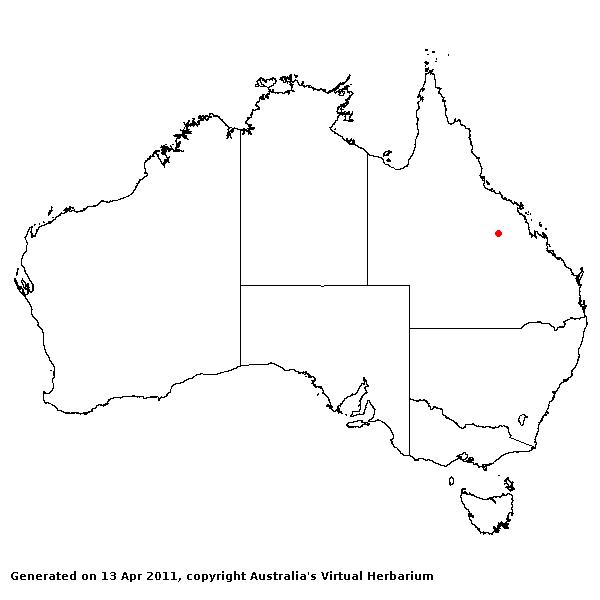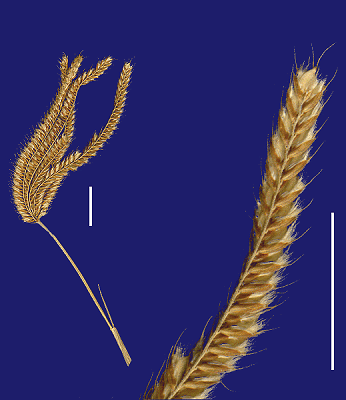Chloris ciliata* Sw. Prodr. Veg. Ind.
Occ. 25 (1788).
Classification. (GPWG 2001) : Subfamily
Chloridoideae. Cynodonteae.
Type of Basionym or
Protologue Information: HT: O.P. Swartz s.n., Jamaica (S; IT:
BAA-661 (fragm.), US-80821 (fragm. ex S)).
Key references
(books and floras): [2002] D.Sharp & B.K.Simon, AusGrass, Grasses of
Australia.
Illustrations:
[1983] J.C.Tothill & J.B.Hacker, Grasses of Southern
Queensland (156(2)).
Habit.
Perennial. Culms erect, 25–60 cm tall. Leaf-sheaths glabrous on surface. Ligule
a fringe of hairs or absent. Leaf-blades 10–20 cm long, 3–5 mm wide. Leaf-blade
surface smooth or scabrous.
Inflorescence.
Inflorescence digitate, with spicate branches.
Spikelets.
Spikelets sessile. Fertile spikelets 1 or more flowered, with 1 fertile floret,
comprising 1 fertile floret(s), with diminished florets at the apex, cuneate,
laterally compressed, 1.8–2.8 mm long.
Glumes. Glumes
similar, thinner than fertile lemma. Lower glume lanceolate, membranous, much
thinner on margins, keeled, 1-keeled, 1 -nerved. Upper glume lanceolate, 2–2.5
mm long, membranous, keeled, 1-keeled, 1 -nerved.
Florets.
Fertile lemma 1.8–2.8 mm long, keeled, 3 -nerved. Lemma apex awned, 1 -awned.
Median (principal) awn subapical, 0.9–2.7 mm long overall. Lodicules present.
Anthers 3. Grain 1.4 mm long.
Continental
Distribution: Australasia, North America, and South
America.
Australian
Distribution: Queensland.
Queensland: South Kennedy.



